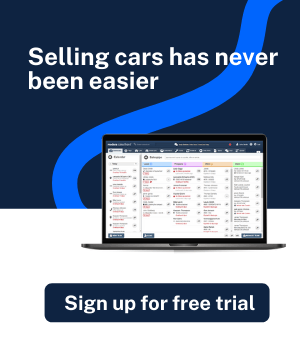
How to Set up a Car Showroom
Those who have a passion for sedans and roadsters, and possess an entrepreneurial flair, should seriously think of setting up a car showroom. But keep in mind, it requires a lot of startup capital, extensive licensing, legal provisions and brand partnerships, and much more. But if you can execute it properly, it can be a significantly lucrative operation, with huge room for expansion. Let’s get started and see how to set up a car showroom!
Check out what the numbers say
The amount of startup capital could range from a few hundred thousand dollars to a couple of million, depending upon the type of inventory you wish to stock. Of course, you can also anticipate higher startup costs if you are franchising brand-name vehicles than if you are dealing in local second-hand cars. Some expenses are one-time, while others are on-going. These are the type of costs to bear in mind:
- Rent for the lot, parking, garage, business office and service centre.
- Early inventory.
- Technology such as computers, phones, printers, dealership CRM software, website development etc.
- Employee salaries.
- Bonds and licensing.
- Franchise fee (if applicable).
The type of dealership matters
Do you wish to be a franchised reseller of an existing, established brand, or an independent front? What about selling new or used cars?
- Franchise – entering into an agreement with big automakers and getting a license to sell their vehicles.
- Independent – no contracts with a major auto manufacturer, so you have a wide selection of brands in your showroom.
- New – selling only new vehicles that are the latest models.
- Used – selling vehicles that are second-hand and could be as old as a decade.
Depending on your financial situation, it is important to consider which business model is more doable.

Take care of legal requirements
There is an enormous list of legal requirements you must adhere to. Although it isn’t possible to cover all, here are some of them:
- Visit a state or provincial government location and apply for a business license and a dealer’s license.
- Pass a criminal background check or conduct a personal questionnaire from a licensing department.
- Pass a mandated deal training course and an inspection of your dealer premises.
- Obtain an employee identification number and state/provincial tax number.
- Apply for several dealer plates and pay the necessary fees.
- Abide by full disclosure regulations on all known mechanical issues with your fleet of used cars (if applicable).
- Submit copies of your insurance policy and auto dealer surety bond agreement.
Depending upon your jurisdiction, there could be additional compliance requirements as well.

Don’t skip market research
It is imperative to conduct market research to know about the demand for your products and services. You are managing an extensive selection of significantly-priced automobiles, so you have to be thorough.
- Find out the number of vehicles sold in your vicinity over the last 12 to 18 months.
- Compute the currency amount of sales for your types of products and estimate how much of it you can actually attract.
- Determine the types of cars most sold in your area (sedans, trucks, sports cars, etc.). It would also be prudent to identify the brands of automobiles, too.
- Decide how you will advertise your showroom and what kind of marketing campaigns you will initiate.
- Identify either your ideal customer, or a typical consumer in your area (age, gender, employment and income level).
- How many existing car dealers do business in your market? This is necessary for assessing competition.
- Learn where most motorists get their vehicles serviced, such as a dealership or local repair shop.
Keep in mind that this is a massive entrepreneurial investment; you need to think about every avenue of the industry and consider all possibilities. It is critical to understand who will be your primary demographic and how you can pad your bottom line.

Do obtain licensing and insurance
A fully-fledged dealership has to go through proper channels to ensure that it possesses sufficient licensing, insurance, and bonding. Without these features, your showroom and dealership is always under threat of being shut down, or could face legal hurdles. Moreover, all dealerships need to purchase comprehensive insurance coverage. The most common insurance products are general liability, lot coverage, inventory loss and property damage. With bonding, you will need a surety bond, so you are shielded from contract defaults, whether it is with a wholesaler or a vendor. A surety bond is critical to safeguard your transactions, even if they are completed with the most reliable third-party. After all, you never know what can happen.
Hire the right people
Of course, there is no point in opening a car showroom if you can’t hire adequate sales personnel. Being a salesperson isn’t easy at all! It requires a knack, flair and strong perspicacity. Whether you sell used BMWs or a new Honda Civic, every sales agent needs to apply a diverse array of strategies to execute a transaction. It is of the utmost importance to communicate effectively with potential customers. Don’t worry – some of the initial transactions might not be successful, but your employees will learn as you grow over the years.
There are many more aspects involved when it comes to setting up a showroom, so you have to cover all the bases before getting started. Knowing how to set up a car showroom means building an inventory, assessing a service department, establishing an online presence, etc. are equally important. So make sure you don’t miss out anything!

